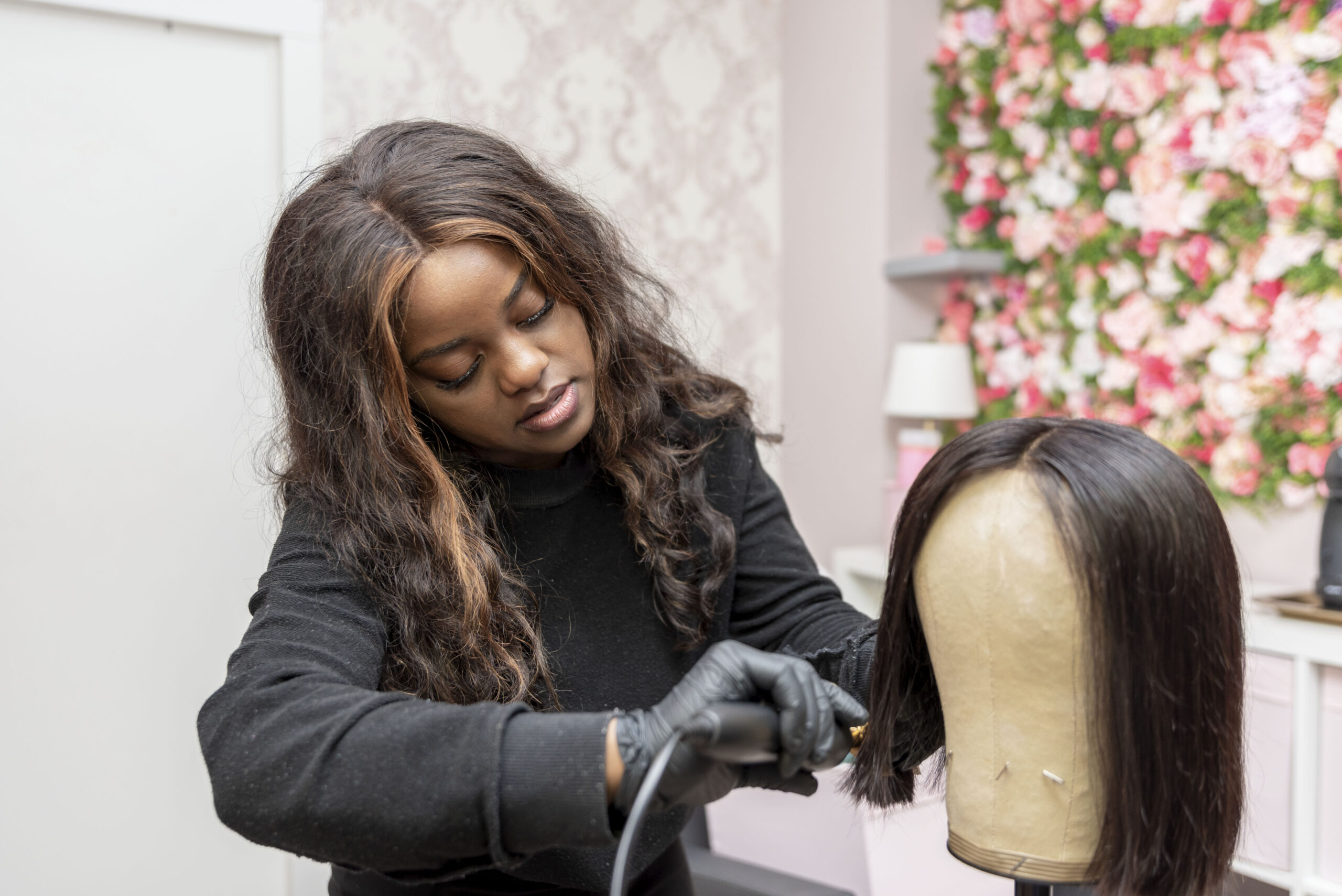For many Black women, braids, wigs, and weaves are more than just a hairstyle. They’re a cultural expression, protective care, and a form of everyday self-preservation in a society where beauty standards don’t always reflect them. Lately, however, achieving those looks is coming with a much steeper price tag.
Thanks to newly reinstated U.S. tariffs on goods from China, which is a major source of hair products and packaging, the cost of essential Black hair care products is rising fast. The increase is not only hitting pockets but also the very foundation of how Black women show up and care for themselves.
What’s Going On With These Tariffs?
In April, the U.S. slapped a staggering 145 percent tariff on imports from China, including synthetic hair, human hair bundles, and even the packaging for styling products. While that number has since been reduced to 30 percent, the damage was already done. Prices on everything from braiding hair to wigs have surged, with wholesalers, stylists, and beauty supply stores passing the costs on to consumers.
What does that mean for you? A service that once cost $180 for knotless braids might now be pushing $250 or more and that’s not including the rising cost of the hair itself. Even a pack of braiding hair that used to run $6 is now hitting double digits in some cities.
Stylists Struggling to Stay Afloat
The rising costs aren’t just felt in the salon chair, they’re squeezing the stylists behind them, too. According to AP News, in cities like Atlanta, where Black-owned hair businesses are the backbone of many communities, professionals are being forced into tough decisions. Some stylists are asking clients to bring their own hair, others are eating the costs just to keep their loyal clientele, and many are considering price increases they never imagined they’d have to make.
Stylists are dealing with sudden increases in supply costs, while also trying to remain accessible to working-class women. These same women depend on protective styles to manage their hair between 9-to-5 jobs, commutes, and gym runs.
When price hikes mean fewer clients and slimmer margins, salon owners are put in the impossible position of deciding between staying in business or serving their community.
Beauty at a Premium: The Emotional Cost
The Black hair experience is emotional, spiritual, and deeply tied to identity. Whether it’s preparing for a job interview, celebrating a birthday, or simply feeling confident in a room that wasn’t designed with them in mind, their hair is part of how they armor up.
When pricing turns braids into a luxury, however, what’s really being taxed isn’t just the product, it’s access. It’s self-care. It’s a small but critical freedom for Black women to look and feel their best in a society that often polices how we wear our hair.
Unfortunately, it’s not just about aesthetics. For many Black women, protective styles aren’t optional. They’re a necessary defense against breakage, shrinkage, and the challenges of managing textured hair in environments that don’t always accommodate their needs. There are instances like workplace pressure to “look professional,” or navigating sweat and humidity without your style falling apart by lunchtime.
The Broader Problem: Beauty Standards and Inequity
Tariffs might be the trigger, but they’re exposing deeper systemic issues. Income inequality, Eurocentric beauty norms, and the high cost of safe, quality hair products are all part of a larger conversation about how Black women are forced to pay more just to meet society’s basic expectations of beauty and professionalism.
While there’s a growing movement toward embracing natural styles, the journey isn’t always easy or even accessible. For some, transitioning away from wigs and braids means re-learning how to care for their hair, investing in new products, and facing bias in the workplace or in public spaces. With reports of toxic chemicals in some synthetic and straightening products, even “affordable” alternatives come with their own risks.
Hair is personal. Hair is political. And in 2025, hair is more expensive than ever, but with community, creativity, and a little resilience Black women will keep finding ways to make beauty accessible, one braid at a time.
